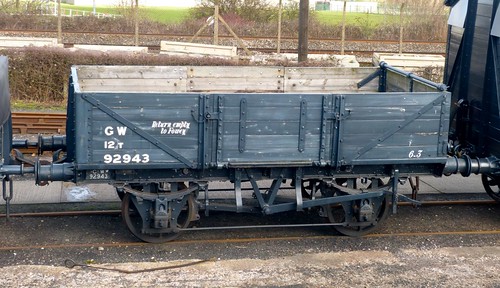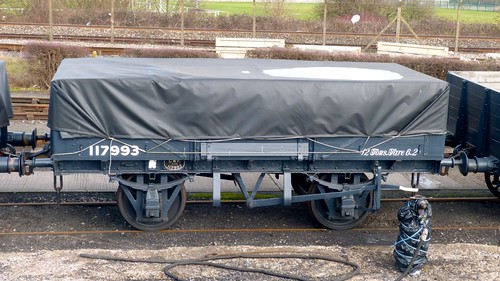A day out to Oxford mainly to see the buses (see elsewhere on my blog) also afforded me the time to catch the train from Oxford to Didcot where the ‘GWS’ are based.
Although it was not a running day, there was plenty to interest me and from the assorted wagons on display, I have been able to make up a typical ‘Great Western Railway’ (GWR) pick up goods train.
Where vehicles have been restored, the standard is excellent and work is ongoing to restore many others.
Every train starts with a loco. In this case a ‘GWR’ 0-6-0T Pannier tank No. 3650. A member of the 5700 class of loco’s. They were built in their hundreds and 16 survive in preservation.
This particular loco was built at Swindon in 1939. Withdrawn in September 1963, it was sold on for further service to a colliery in South Wales where it was painted blue. It was purchased by the a ‘GWS’ member in 1969.
It was stored at Hereford before coming to Didcot and after 20 years of restoration re-entered service in 2008.
92943
A 12 ton wagon for use in the ‘China clay’ traffic. A clue to that is given by its home base Fowey (pronounced Foy) in Cornwall around which the trade was centred being painted on the side.
It was built in 1913 to diagram 0.13.
A feature of this type of wagon are the end doors which permitted the load to be discharged by tipping it straight into a waiting ship.
117993
A general use 5 plank wagon built at Swindon in 1931 to diagram 0.29. It was saved for preservation in 1969.
101720
A ‘Mink A’ built in 1924 at Swindon to diagram V.14
The GWR used code names such as ‘Mink A’ for its vehicles over the telephone. The telephone in earlier years was not as clear as it is today so the use of code names was used in a similar manner as the phonetic alphabet is used today.
The branding ‘Flour Traffic Only’ was presumably to ensure that the van stayed clean inside.
47886
A 6 Ton ‘Fruit Van’ built at Swindon to diagram Y.2 in 1892. It was restored to this livery in 2010 having previously been painted in passenger brown.
SR 4409
A 6 wheel Milk Tank built by the Southern Railway at Lancing in 1931 to diagram 3152. It was originally built with 4 wheels but was lengthened at Ashford in 1937.
112843
A ‘Mink G’ Van built at Swindon in 1931 to diagram V.22.
70335
A ‘Macaw B’ built at Swindon in 1939 to diagram J.28. What would be known elsewhere as a ‘Bogie Bolster’ wagon.
This image illustrates a design feature of this type of wagon in that the deck of the wagon is curved with the the lower part being at the ends and the highest point in the middle. The load would apply compression which would straighten the deck out.
745
An Oil Tank Wagon built in 1912 by Hurst Nelson & Co. at Motherwell.
Although marked as ‘Royal Daylight’ the small lettering to the left gives the owners as the ‘Anglo American Oil Company’.
The small star shaped plate on the right hand side shows the wagon as being registered with the ‘Southern Railway’ in 1930.
68684
A 20 Ton Brake Van to bring up the rear of our train. Known under the ‘GWR’s code system as a ‘Toad’.
Built in 1924 at Swindon to diagram AA.15.
The reference to Hayle RU indicates that it was allocated to Hayle in Cornwall and the RU indicates that it only had Restricted Use.
Hayle had a steeply graded line down to the harbour and it could be that the van was used as additional braking capacity.











No comments:
Post a Comment